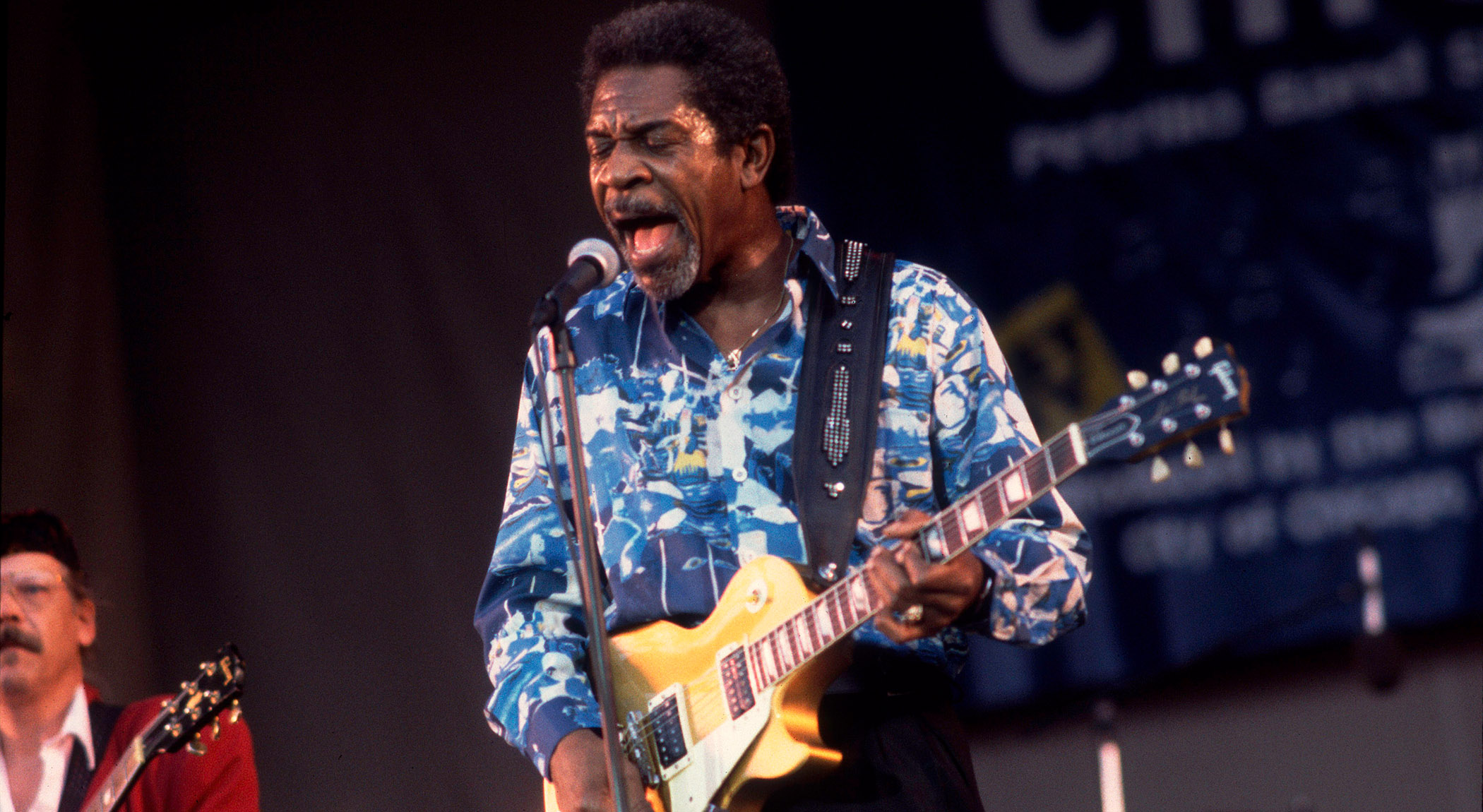
In this lesson, we’re shining a spotlight on an unsung hero of blues: Luther Allison. Known for his electrifying performances and soulful intensity, Allison left an indelible mark on the blues scene, despite never achieving the mainstream success he deserved over his four-decade career.
Born in 1939 in Widener, Arkansas, Allison moved to Chicago as a teenager, where he immersed himself in the city’s vibrant blues scene. Influenced by legends like Muddy Waters and Howlin’ Wolf, he developed a fierce, soulful style on both guitar and vocals.
By his early 20s, Allison was performing regularly in Chicago’s West Side clubs, where his raw energy and emotionally charged performances quickly set him apart. His blend of gritty, hard-hitting blues with soulful R&B elements became his signature sound.
Although rooted in traditional blues, Allison had a talent for transcending the genre’s boundaries, skilfully incorporating elements of rock and funk into his music.
His passionate shouts, searing guitar solos, and commanding stage presence made him a standout performer. Often likened to ‘Otis Redding with a guitar’, Allison’s ability to pour raw emotion into every note earned him devoted fans both in the US and across Europe, but, despite his talent, widespread recognition was slow to come.
Commercial success eluded him for much of his early career, partially due to the shifting tides of music in the 1970s and 80s. It wasn’t until the late ’90s, after a long stint in Europe, that he experienced a resurgence in America, with several critically acclaimed albums and a series of triumphant live performances.
Allison’s guitar style was a central part of his appeal. He was known for his wailing slide, searing solos, and funky, rhythmic chord work. Rather than focusing on flashy technique Allison emphasised the emotional depth of his playing, bending and stretching notes to express these emotions, from heart-wrenching to fiery defiance. Every note was intentional, so his music resonated with listeners from all walks of life.
Allison was also a master showman. His live performances were legendary, often stretching late into the night as he poured out his heart and soul. This emotional intensity was a hallmark of his style and helped to cement his reputation as one of the most dynamic performers in blues history.
To capture some of this spirit in your own playing, focus on the emotional connection to the music. Pay attention to the way he uses dynamics, phrasing, and tone, and aim to reproduce this level of intensity.
Studying his live performances can provide valuable insight too, into how he connected with his audiences and created such a powerful presence on stage. Dive into his discography, watch his performances, and be inspired by this truly gifted, if undersung bluesman.
For your involvement, there are two solos typical of him, the first in G minor and the second in A major. Enjoy!
Get the tone
Amp Settings: Gain 6, Bass 4, Middle 5, Treble 6, Reverb
Luther plugged his guitar straight into a cranked tube amp. He was fond of Gibson guitars, playing both Les Pauls and 335s, but was also known to use Strats and a Fender Jaguar.
Ultimately, any guitar can achieve a similar tone when paired with an American tube style amp delivering ‘edge-of-breakup overdrive’. A touch of reverb will add some ‘live’ ambience.
Study 1
Here, we have a slow blues in G minor, highlighting Luther’s emotive soloing style with an emphasis on string bends and vibrato.
Maintaining the rhythmic feel is crucial, so avoid rushing and ensure your string bends are in tune. Strive to be as expressive and articulate as possible, as every note mattered to Luther.
Example 2
Here’s a shuffle featuring Allison’s signature phrasing. Though faster and more energetic, the emotion is still hugely important. This solo sticks to the minor pentatonic while being in A major, demonstrating how impactful phrasing and feel can create a compelling performance without ‘stepping outside the box’.







